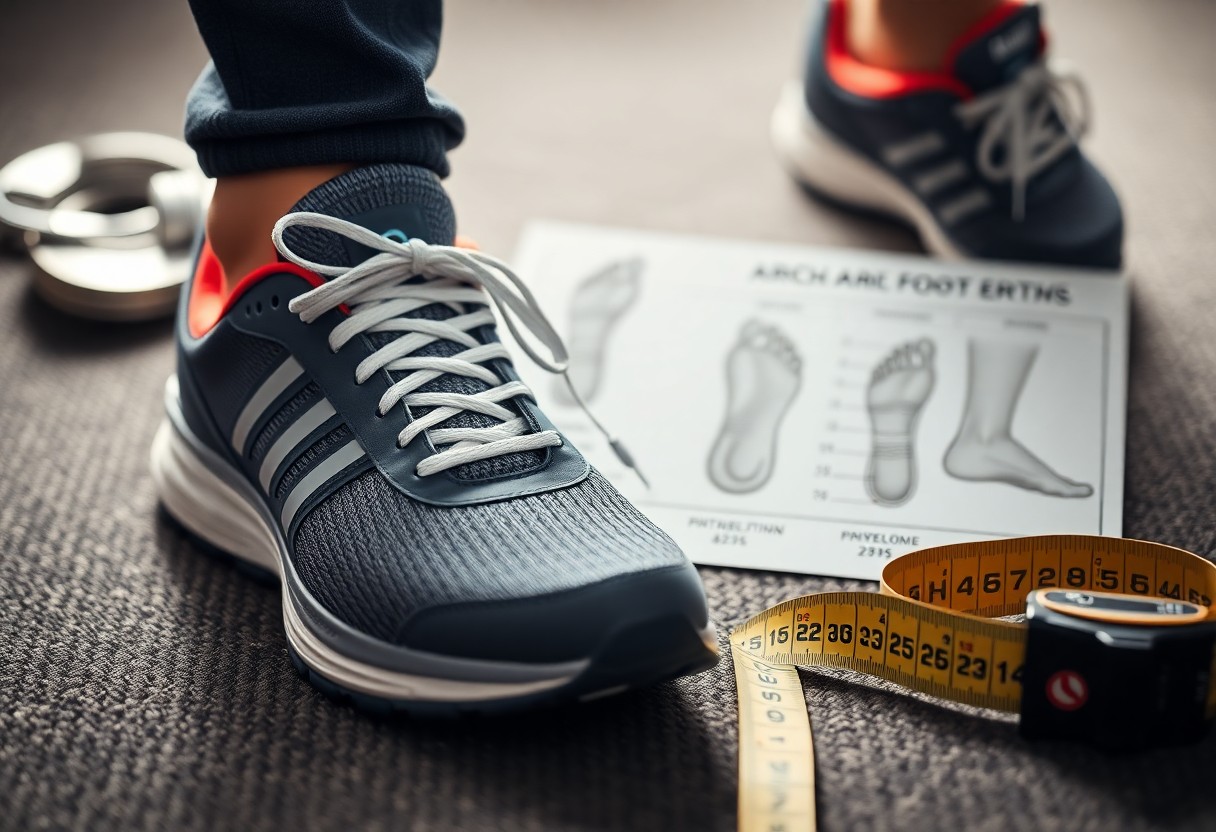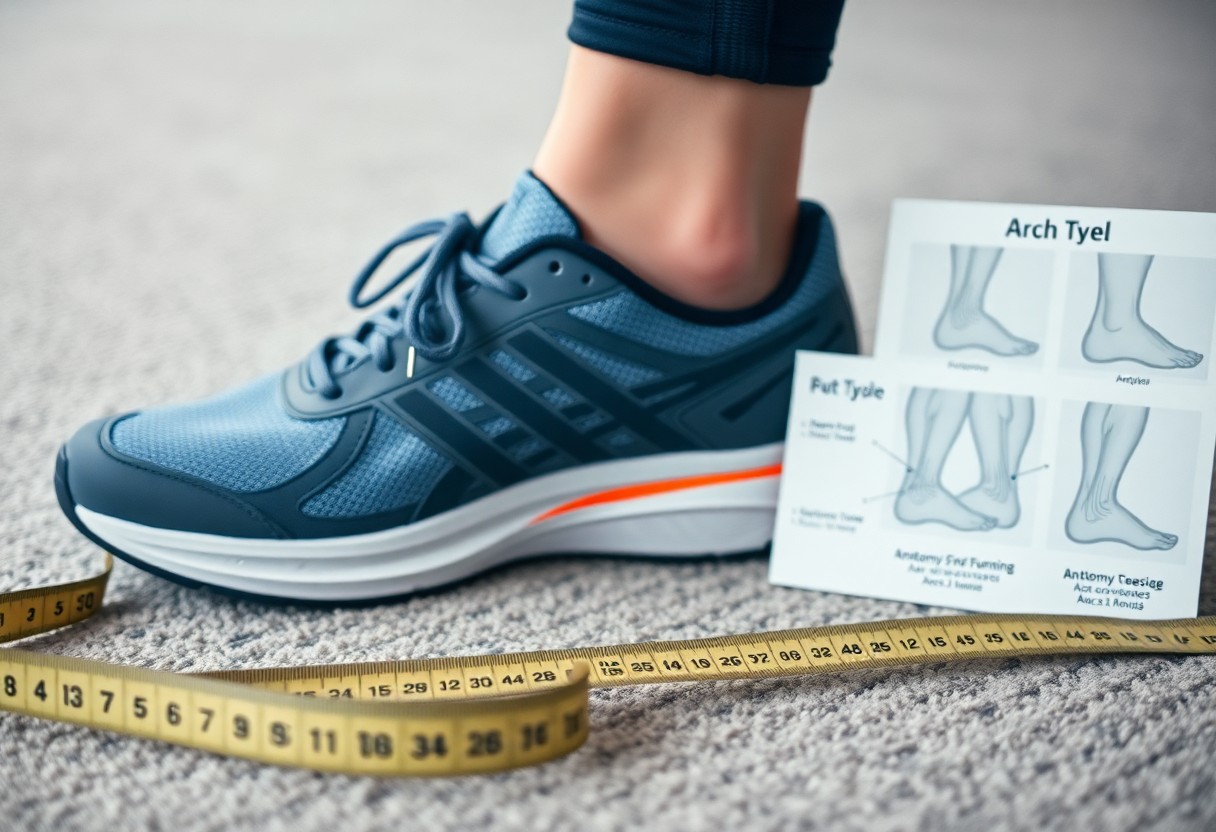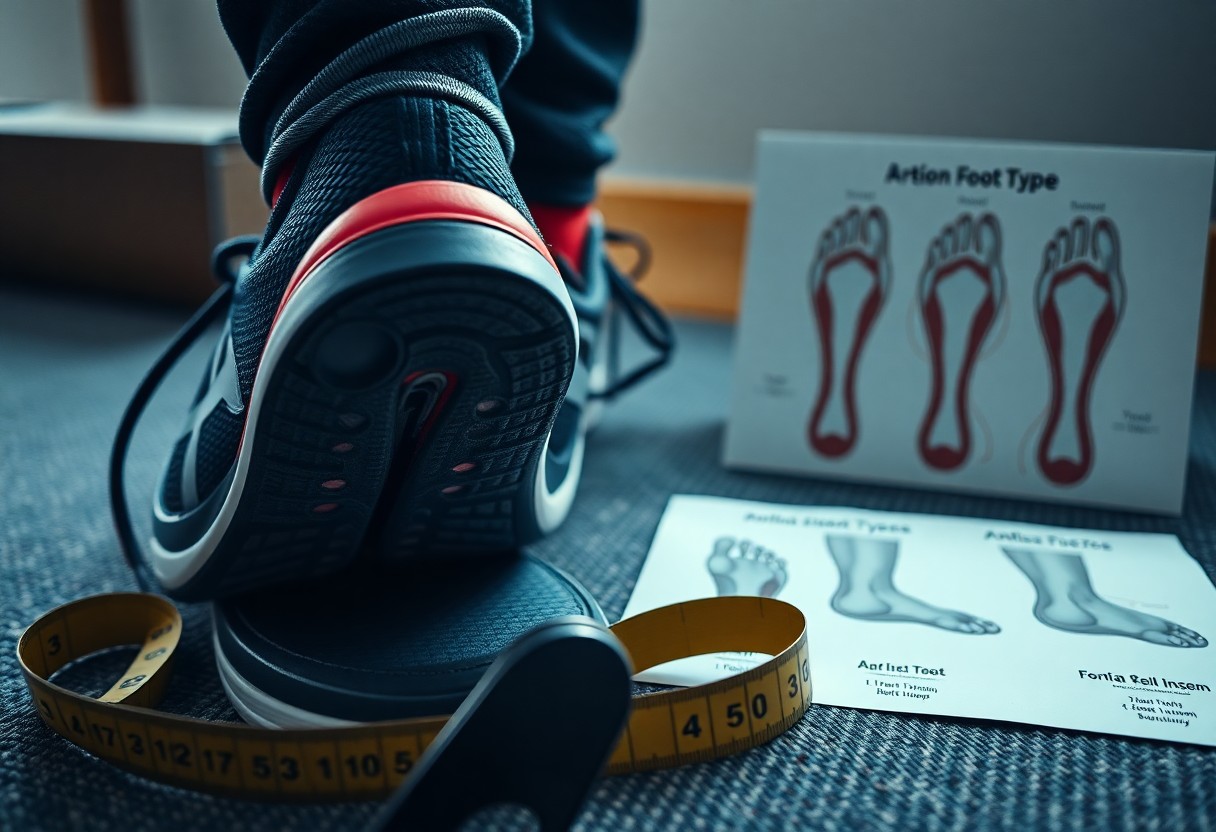Providing appropriate support for your feet doesn’t necessarily mean you have to add arch support to your shoes. It may surprise many to learn that the majority of people do not actually need arch support in their footwear. Scientific research indicates that going without artificial arch support can strengthen your foot muscles over time. Continually depending on these rigid supports can weaken the muscles in your feet. The human foot is naturally designed with arches that flex and react to different surfaces, and restricting this essential movement with stiff supports can negatively impact your foot health in the long run. This detailed article will explore the science behind arch support, empowering you to make educated choices regarding your foot health.

Uncovering the Historical Development of Arch Support in Footwear
The natural support system of your feet has played a critical role in the design of footwear throughout history. The concept of arch support gained popularity during the 1920s when Dr. William Scholl introduced commercial orthotics to the public. Before this innovation, people relied heavily on the natural strength and flexibility of their feet. Understanding this historical context can shed light on how our perceptions of foot health have evolved over time and the impact of modern footwear on our feet.
Tracing the Evolution of Traditional Footwear Practices
The evolution of footwear shows that ancient civilizations largely utilized simple, flat sandals or often went without shoes altogether. These practices allowed for natural foot development and strength. The feet of our ancestors remained robust and flexible, reliant on their inherent mechanics rather than artificial supports, as evidenced by studies on indigenous groups that continue to wear traditional footwear. This historical perspective reinforces the crucial role that natural foot mechanics play in maintaining optimal foot health and strength over time.
Analyzing Contemporary Standards in the Footwear Industry
By the mid-20th century, particularly during the 1950s, shoe manufacturers began to incorporate built-in arch support as a standard feature in footwear. Today, most contemporary shoes are designed with structured arch support, a characteristic that has become commonplace despite limited scientific evidence supporting its necessity for everyone. This trend reflects a significant shift in consumer expectations and industry norms, raising important questions about the long-term effects of such designs on overall foot health.
Currently, arch support is so widespread that 70% of modern shoes are equipped with this feature. However, research published in the Journal of Foot and Ankle Research warns that over-reliance on arch support can lead to muscle weakness in your feet. Consequently, many podiatrists are now recommending regular barefoot walking and the use of minimally supportive footwear to help maintain natural foot strength and functionality.

Delving into the Complex Structure of Foot Architecture
Your feet consist of 26 bones, 33 joints, and over 100 muscles, functioning optimally when given the freedom to move. The arch of the foot is a self-supporting structure, gaining strength through regular use while becoming weaker when subjected to artificial support. Studies reveal that 75% of individuals who wear conventional shoes with arch support show reduced activity in their foot muscles, leading to a decline in natural strength over time.
Understanding the Mechanics of Natural Foot Movement
The natural design of your foot is an engineering marvel, containing a complex system of self-supporting mechanisms. Engaging in barefoot walking or wearing minimal shoes allows your feet to move through a full range of motion, enabling the arches to flex and strengthen autonomously. Research suggests that people who frequently walk barefoot or wear minimal footwear develop stronger foot muscles and more stable arches compared to those who rely heavily on supportive shoes. This highlights the critical importance of natural movement in promoting foot health.
Maximizing Muscle Function and Development
Any disruption to your foot’s natural movement can impede its development. Your foot muscles need regular engagement through natural activities to maintain their strength. Research published in Nature indicates that wearing shoes without arch support contributes to the development of stronger intrinsic foot muscles. This connection emphasizes the importance of allowing for natural movement to ensure optimal foot health and functionality.
Additionally, it is essential to recognize the potential consequences of wearing shoes designed with built-in arch support. Such footwear may lead to decreased muscle engagement in the feet, causing potential weakness over time. Studies have demonstrated that transitioning to minimal footwear can result in an impressive increase in foot muscle strength by as much as 60% within just eight weeks. However, it is vital to approach this transition with care, especially for individuals with existing foot conditions, to prevent injury.
Investigating Research and Evidence Surrounding Foot Health
If you are keen to understand the scientific principles behind arch support, numerous studies show that your feet can strengthen without artificial support. Various research initiatives indicate that natural foot movement promotes superior muscle development and enhances arch stability, underscoring the crucial role of biomechanics in maintaining foot health.
Examining Key Scientific Studies on Arch Support
Among the most significant findings, a study published in Nature reveals that individuals who opt for minimal footwear develop foot muscles that are 50% stronger than those who wear traditional shoes with arch support. This compelling evidence supports the idea that regular movement and exercise enable your feet to maintain their arches naturally, without the need for external support.
Conducting a Comparative Analysis of Footwear Choices Across Different Populations
Key Differences Between Traditional and Minimal Footwear Users
| Traditional Shoe Users | Minimal Shoe Users |
| Exhibit higher rates of flat feet | Demonstrate superior arch strength |
| Show weaker foot muscles | Exhibit stronger foot muscles |
A comprehensive analysis of various populations indicates significant disparities in foot health. The structure and strength of your feet can adapt significantly based on the types of shoes you wear.
Insights from Global Population Studies
| Developed Countries | Barefoot Communities |
| 20% flat foot occurrence | 3% flat foot occurrence |
| Higher reliance on arch support | Natural arch strength |

Understanding the Paradox of Support in Footwear
Challenging conventional beliefs, overreliance on arch support can undermine your feet’s natural strength. The human foot is intricately structured with a complex network of muscles, tendons, and ligaments that work together to provide natural support. When artificial arch support is relied upon, this can lead to decreased engagement of your foot muscles, resulting in gradual weakening.
Investigating the Dependency Cycle Created by Arch Support
Continuous use of arch support creates a harmful dependency cycle. Feet can become overly reliant on external support, resulting in muscle atrophy. Research indicates that 70% of individuals who frequently use arch support report increased discomfort when walking without their supportive shoes, highlighting the development of this dependency.
Exploring the Link Between Muscle Weakness and Arch Support
Wearing shoes with built-in arch support could weaken your intrinsic foot muscles by as much as 50%, according to findings in Nature. This weakening compromises your feet’s natural arch support system, potentially leading to conditions like flat feet and other foot-related issues. It is important to understand that this muscle weakness can extend beyond your feet, negatively affecting your overall posture and balance. Research indicates that individuals transitioning to minimal footwear often experience a 60% increase in foot muscle strength within just six months.
Exploring Natural Alternatives to Enhance Foot Health
For those seeking to move away from traditional arch support, there are various natural alternatives that can help improve foot strength. These methods emphasize allowing your feet to function as they were intended, promoting the development of stronger foot muscles and more stable arches through natural movement.
Adopting Minimalist Footwear for Enhanced Natural Movement
Minimalist shoes, defined by zero drop soles, wide toe boxes, and flexible materials, encourage natural foot movement. Such designs allow your feet to move freely, supporting proper foot mechanics and promoting natural arch strength. Research indicates that consistent use of minimal footwear can increase foot muscle strength by up to 60% through daily activities.
Implementing Safe Strategies for Transitioning to Minimal Footwear
When considering a shift to minimalist footwear, it is essential to take a careful and gradual approach to ensure your safety and comfort. Start by wearing minimal shoes for brief periods, gradually extending the duration over several weeks. This method helps to prevent overuse injuries as your feet adjust to their newfound freedom, allowing for a smoother transition.
A successful transition should ideally incorporate specific foot-strengthening exercises. Begin with 10-15 minutes daily in minimal shoes, increasing the time by an additional 5-10 minutes each week. Include exercises such as toe spreads and short barefoot walks on safe surfaces. This incremental approach will help minimize the risk of common transition injuries while effectively enhancing your natural arch strength.
Recognizing Medical Considerations for Optimal Foot Health
It is vital to acknowledge that your foot health requires individualized attention. While natural foot movement is beneficial for muscle strength, certain medical conditions may necessitate specific support. Factors such as your foot structure, activity levels, and any pre-existing conditions will significantly influence your optimal footwear needs.
Determining When Arch Support Is Essential
Contrary to popular belief, arch support is not universally necessary. However, individuals suffering from acute injuries, severe flat feet, or specific medical conditions may benefit from temporary or permanent arch support. Research indicates that only 10-20% of the population actually requires specialized arch support for medical reasons, emphasizing the need for personalized assessments.
Recommendations for Professional Foot Health Assessments
To ensure you are making informed decisions about your footwear, it’s advisable to consult with a foot health professional. Comprehensive assessments should include gait analysis, foot structure evaluation, and a review of your medical history. These components are essential for determining whether you need arch support or if transitioning to minimal footwear is a suitable option.
Guidance from a qualified professional can provide clarity and direction in your foot health journey. A thorough assessment should encompass measuring arch flexibility, assessing muscle strength, and analyzing walking patterns. Your healthcare provider should also consider your daily activities and any previous foot injuries to develop an effective treatment plan tailored to your specific needs.
Contemplating Footwear Choices and Their Impact on Foot Health
Your selection of footwear plays a crucial role in influencing your foot health. You now recognize that arch support is not a necessity for most individuals and can potentially weaken foot muscles over time. Your feet possess inherent strength and flexibility, functioning best when allowed to operate as nature intended. If you are contemplating a transition to minimal footwear, initiating this process gradually will facilitate effective adaptation for your feet. Evidence strongly suggests that permitting your feet to function without artificial support can lead to stronger muscles and enhanced foot health for the majority. Always consider your individual needs and seek advice from a foot health professional for specific concerns.
Common Questions Regarding Arch Support and Foot Health
Do healthy feet truly need arch support in footwear?
Most healthy feet do not actually require arch support in shoes. Studies show that natural foot strength develops more effectively without the influence of artificial support. The muscles and arches of the foot function optimally when allowed to operate naturally. This conclusion aligns with research on populations that frequently go barefoot or choose minimal shoes, which demonstrate stronger foot muscles and fewer arch-related problems.
Can reliance on arch support weaken feet over time?
Yes, prolonged dependence on arch support may lead to weakened foot muscles. When artificial supports take over the function of the foot muscles, these muscles become less engaged and gradually lose their strength. This creates a cycle of dependency. Research published in Nature indicates that individuals who consistently wear conventional shoes with arch support often possess weaker foot muscles compared to those who choose minimal footwear.
Who genuinely requires arch support in their shoes?
Certain people with specific foot conditions, injuries, or medical issues may truly benefit from arch support. This includes individuals diagnosed with flat feet, specific foot injuries, or structural abnormalities. However, these cases should be evaluated by a foot health professional who can develop an appropriate treatment plan. The goal should be to restore natural foot function whenever possible, rather than relying on permanent support.
The Article Arch Support: Essential Facts About Shoe Necessities Was Found On https://limitsofstrategy.com
Comments are closed